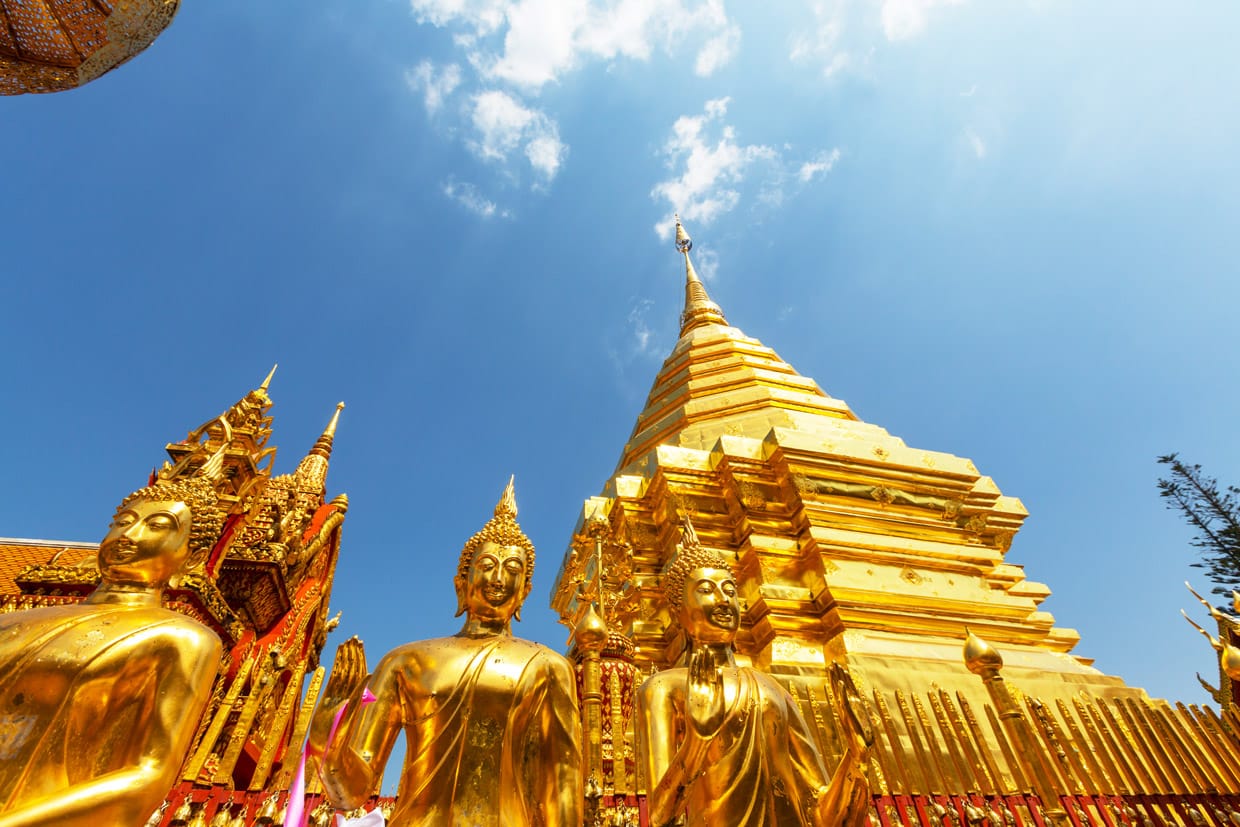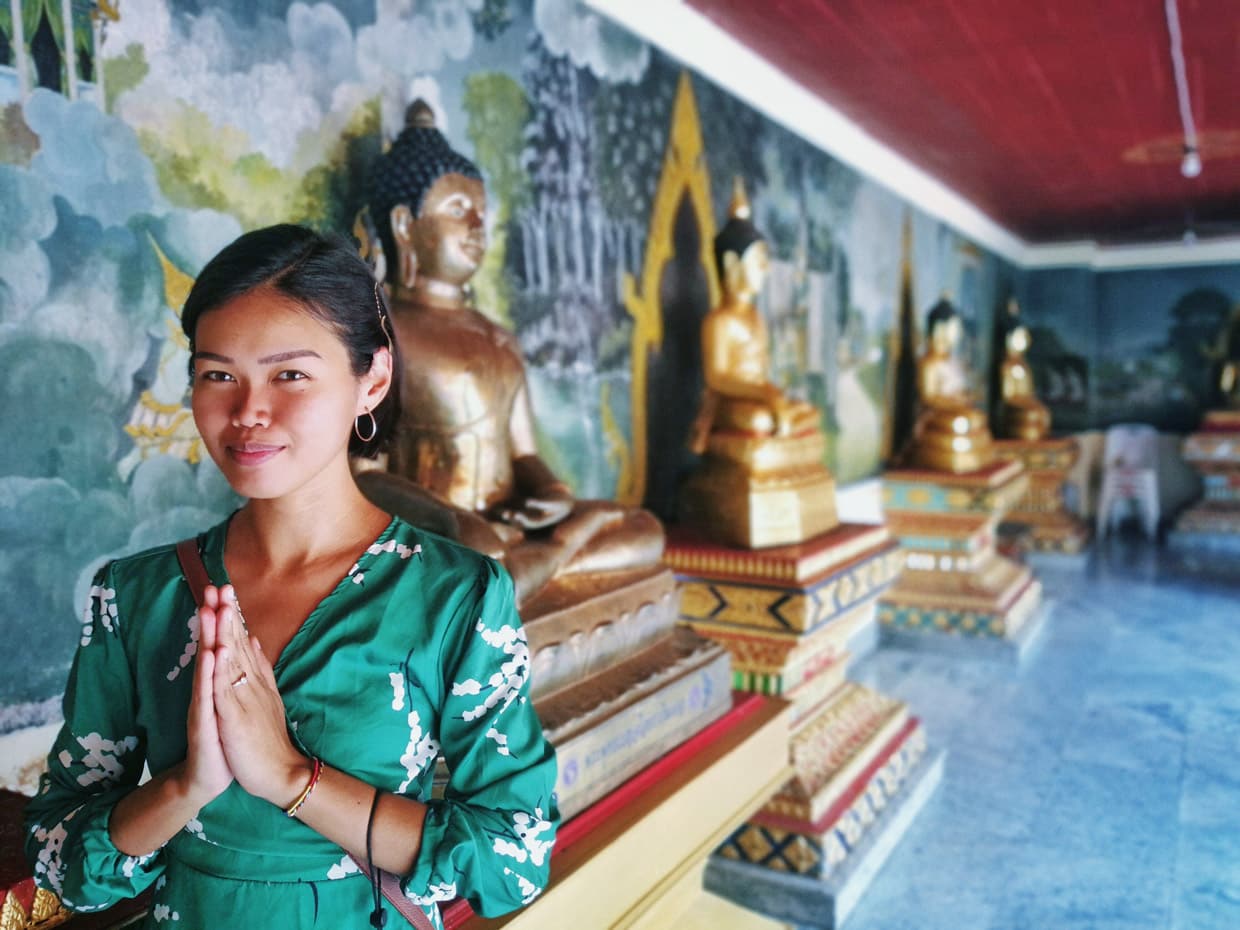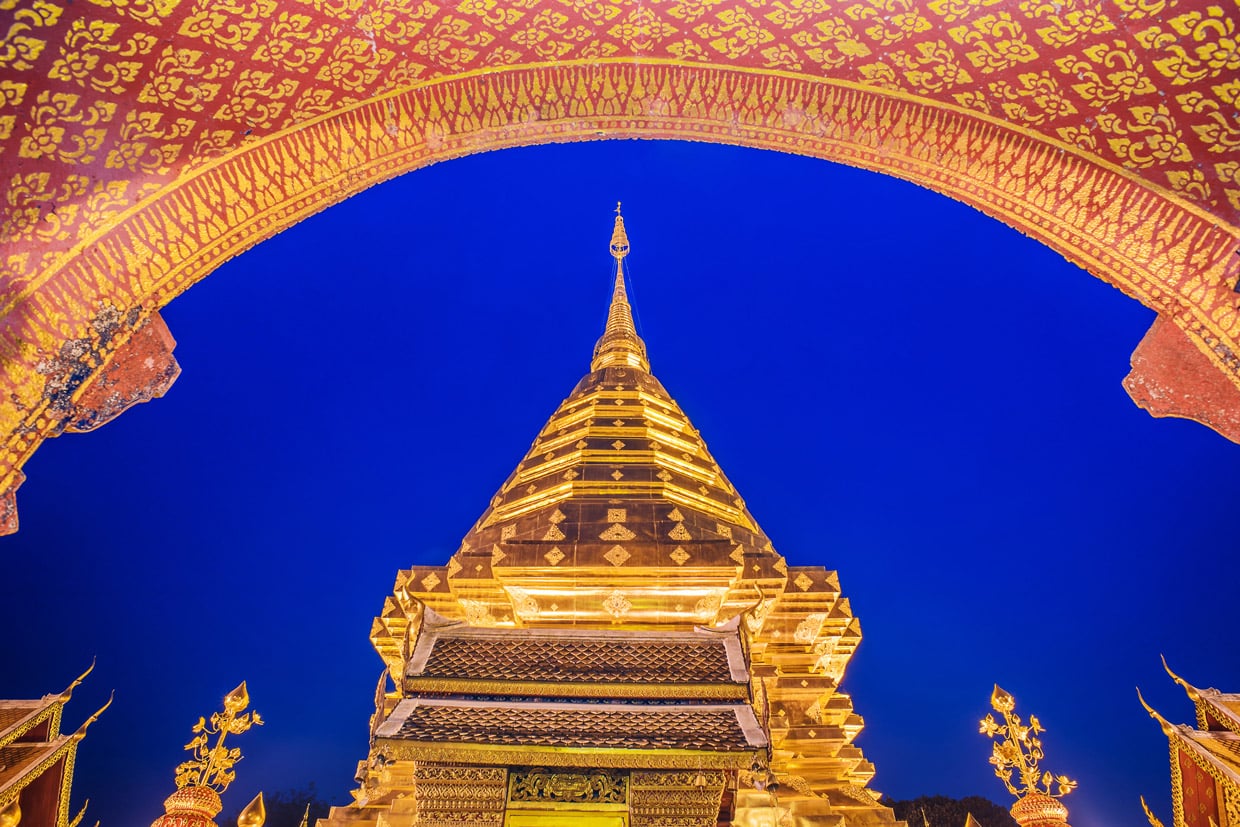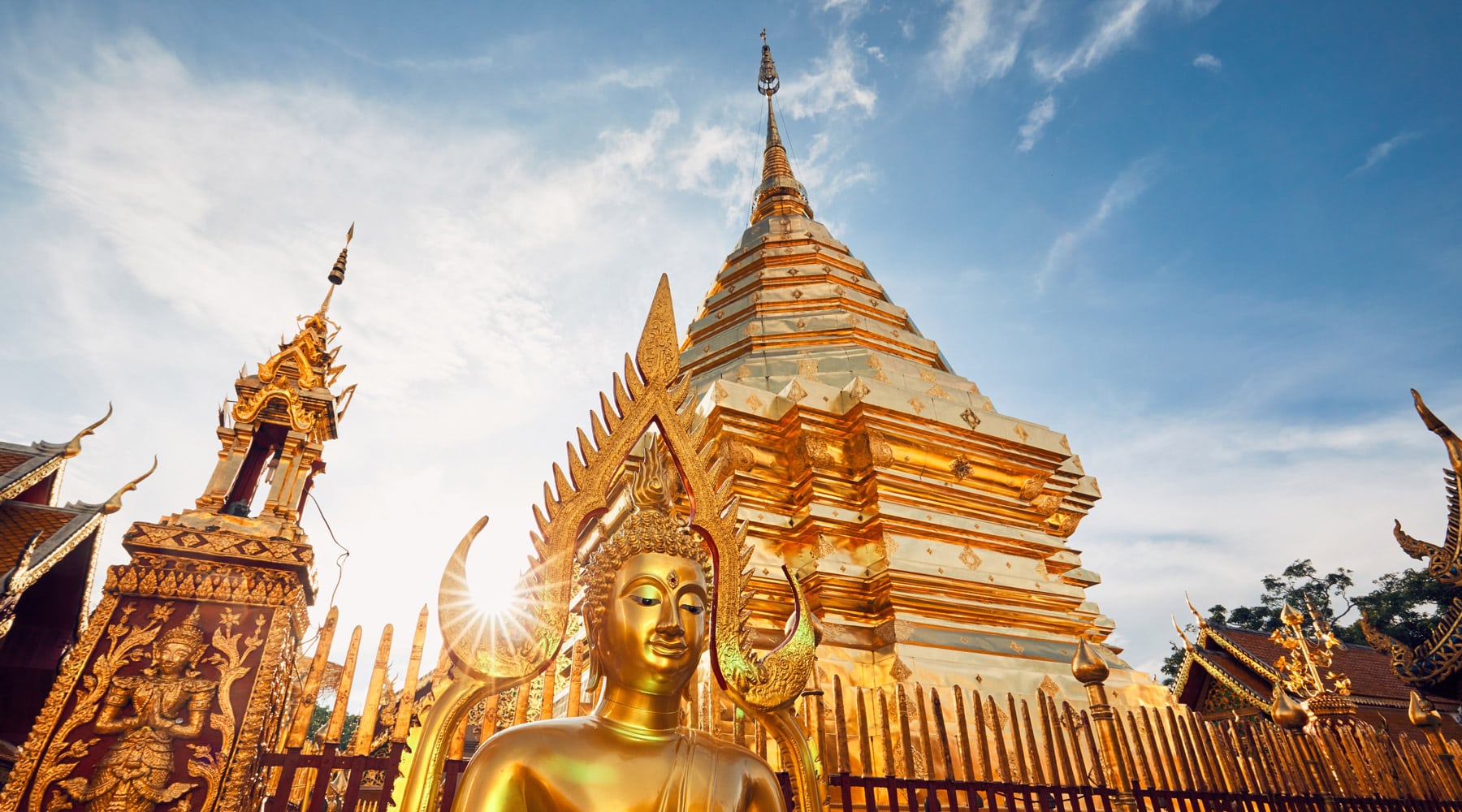The park was previously called Doi Aoy Chang and now is named after the two mountains within; Doi Suthep and Doi Pui. This park is a few kilometers northwest of Chiang Mai City, covering 265 km2. It is the site of the hermit Sudeva’s retirement home that was situated here for many years. Many visitors from around the world head here to explore a majestic part of the planet and make an unforgettable memory.
The location and its Characteristics
The Doi Suthep-Pui National Park was formerly known as Doi Aoy Chang. The name is derived from the two mountains that make up the Park; Doi Suthep and Doi Pui. A hermit by the name of Sudeva lived on the slopes of Doi Suthep for many years. Chiang Mai Provincial Park is located a few kilometers northwest of Chiang Mai City and is the largest park in the province, covering 265 km2.
Doi Pui Mountain, waterfalls, viewpoints, trails, and the Wat Phra That Doi Suthep temple are the park’s main attractions. It is considered one of the best national parks in the country for hiking, thanks to its “endless” trails that crisscross the national park from all directions and elevations. Another popular activity in this place is cycling.
It has been claimed that there is a cave near Doi Suthep called Tham Ruesi. There are several websites and tourist maps in Doi Suthep claiming this. It may refer to a shrine or small rock shelter. It seems that no one knows where this cave is. The Doi Suthep area has no caves known to man, none that are really noteworthy to visitors. Despite this, there are some caves around Samoeng, one of which is 150 meters long, located right west of the Doi Suthep National Park.
Mountain ranges in the park get their names from the Thanon Thong Chai range. The bedrock of the ranges is mostly granite. Some peaks tower above 1200 meters asl, including Doi Pui, which is the highest peak (at 1,685 meters asl) in the park, and Doi Buak Ha.
Several major attractions, such as the headquarters and most of the park’s interests, are located in the southern area near Doi Suthep. Ten km to the north is an area with fewer attractions around Mok Fa Waterfall.
The forest in the park includes evergreen forest at higher altitudes above a thousand meters and deciduous forest at lower altitudes. A patch of mixed deciduous-evergreen forest is found along the streams and gullies. There are many different types of trees, including oaks, dipterocarps, and trees from the magnolia family. Around 2,000 plant species, approximately 360 bird species, and many mammal species have been reported in the park.
The rainy season runs from May to November, with the wettest months being August and September with almost daily rainfall. There is not much rain during the rest of the year. At an altitude of around 4,000 ft, the park’s climate is cool and pleasant all year round. Average temperatures range between 20 and 23 °C. Sometimes the temperatures can fall below 5-6 degrees Celsius during the winter, especially around February.
Wild Animals
Even though the park is busy with quite a few villages around it, some exciting mammal species have been recorded here. Rare species of dholes were spotted just recently. There are also Indian muntjacs, wild boars, Assam macaques, Indian slender cats, Asian golden cats, Malayan porcupines, and Asian black bears within the park.
There are about 360 recorded species of birds at Doi Suthep. It is not as rich in diversity as nearby Doi Inthanon, though. A number of bird species seen in the park are; black-headed greenfinch, dusky thrush, brown bush warbler, Tristram’s bunting, Grey-winged Blackbird, chestnut thrush, chestnut-tailed Minla, white-browed shortwing, purple Cochoa, Yellow-browed tit.
Many rare amphibians have been recorded in the park, including Theloderma Gordoni, Tylototriton Uyenoi, and Ichthyophis Youngorum.

Activities
A variety of activities can be performed here, suitable for people of all ages. The most popular one is to visit the attractions along the main road, like Doi Suthep Temple, waterfalls, Bhubing Palace (the former royal residence), and Doi Pui Mountain and Village. There are many trails in the park, though most require guides because it is easy to get lost.
Watching wildlife is hard. One has to walk daily on the trails to catch a glimpse of elusive mammals of the park. It might be easier to watch birds if you have the right equipment. There are good numbers of bird species to see at various altitudes on the accessible roads/trails (read the Wild Animal section above for more information).
Attractions in Doi Suthep-Pui
Wat Phra That Doi Suthep
A Theravada Buddhist temple, it is generally called Doi Suthep Temple, with several holy shrines, temples, and statues surrounding it. It is located at the top of Doi Suthep mountain, at 1055 meters above sea level, 14.5 km from the old city center of Chiang Mai. There is evidence that the first chedi was founded within the 14th century and is still a working monastery to this day. The site is among the most important in the region. Several aspects of the temple were influenced both by Buddhism and Hinduism. You can find a replica of the Emerald Buddha and the Hindu God Ganesha statue in the temple compound.
The temple is accessible by walking 309 steps steeply up, accessible from the main road, or using the tram for 30B. Throughout the way up, trees and Naga figures are lining the route. Upon entering the temple terrace, visitors are required to take off their shoes and dress appropriately. A clothes hire service is available for those who don’t want to wear shorts or bare shoulders. The temple generally opens at very early hours of the morning, from around 5 – 6 am, and closes around 7 pm.
Yod Doi Pui Camping site
Bhubing Palace is located north of the campsite, accessible from a road that turns right after 900 meters from the palace, 3.8 km to the north. The camp offers a visitor center, a restaurant, and basic facilities. Mountain bikes are also available for rental at the camp visitor center. Tents for two people are available for 225 Baht per night, sleeping bags and other accessories are available for purchase for 60 Baht. Rental packages for a tent with all accessories are 405 Baht. Campers are advised to bring warmer sleeping bags since nighttime temperatures may drop as low as 5-6 °C.
The Waterfalls
Many waterfalls can be found in Doi Suthep-Pui National Park, and we list some popular ones here.
Mon Tha Than Waterfall Trail and Campsite
This famous and often busy nine-tiered waterfall is approximately 3 km into the national park. Entering the park at 1.5 km away, turn left to follow a side road that leads to the waterfall. Next to the road, you will see a checkpoint. DNP website allows reservations at 1,500 Baht per night for a camping site and few bungalows near the waterfalls.
Huey Kaew Waterfall
One of the most popular tourist attractions in Chiang Mai is the small waterfall located in the perimeter of the city, just a short walk from the park entrance. It is popular among the locals. Lots of butterflies can be seen at the waterfall. There is a 500-meter-long trail that leads from this waterfall to the main road of the park.
Mok Fa Waterfall
A waterfall, Mok Fa or Mork Fa, is accessible by car, bicycle, or songthaew. The waterfall is situated close to the north end of the park, just 1.4 km from the Pai highway. It is a 5-10 minute walk away from the parking area. Visitors can rent accommodations for the night for 1,500 THB in a visitor center and bungalows. You will be charged 100 Baht admission for adults and 50 Baht entry for children.
Mae Sa Waterfall
An impressive waterfall that spans ten levels along a 2.5 km trail into the forest. The waterfall is located about 5 km west of Mae Rim, about 600 meters from highway-1096. It is accessible by motorbike only. You will be charged 100 Baht and 50 Baht entrance fees for the waterfall for adults and children, respectively.
Dtaat Mook Waterfall
You can walk to the adjacent ranger station, where you can find this medium waterfall. During the dry seasons, it may have a bit less flowing water. An entrance fee of 100 Baht is charged per adult and 50 Baht per child to enter the waterfall.
Bhubing Palace
A palace built in 1961 as a royal winter residence, Bhubing Palace is the official home of the royal family whenever they visit northern Thailand. It is called Phra Tamnak Phu Phing in official documents.
Four kilometers west of Wat Phra That Doi Suthep is where the palace is located. State visitors from abroad stay in guesthouses on the grounds of several buildings. Visitors are welcome to visit the palace except when the royal family stays there. Excellent birdwatching and butterfly is watching in the area and good views of Chiang Mai. The hours of operation are 8:30 am to 4:15 pm, but sometimes they close as early as 3 pm.

Trails
In order to list just a few popular trails of the National Park, below is a list of some of the more popular routes. It is effortless to get lost in the park as it is full of trails crossing one another from different directions and because some tracks are not well marked.
Buddha’s Footprint Trail
This 13 km trail starts from Doi Pui Hmong Tribal Village in the middle of the park. Located approximately 1,320 meters above sea level near the village, the trailhead is immediately north of the town. About 1,490 meters high is the trail’s highest point. It is an easy walk; however, the length makes this trail a moderate one.
Leaving the village, the trail gradually ascends to the beginning of a mountain range. It begins to descend until the northernmost point, where it descends and connects with another track called the False Buddha’s Footprint Trail. It is necessary to have a ranger or a guide to walk the trail. It may even be possible to arrange a local guide at the Hmong village for an unknown price.
Monk’s Trail
One of the most well-known trails in Doi Suthep, it crosses Doi Suthep through a trailhead west of Chiang Mai University and culminates at the Wat Phrathat Doi Suthep. This trail would take one and a half hours to walk. About halfway into the track, you’ll find another temple near the main entrance to the Park, Wat Phra Lat. To proceed on the trail, hikers need to walk a couple of hundred meters along the road and then continue on the other side of it.
Huay Tung Tao Circular Trail
There is more than 7 km of poorly maintained circular trail. It would be best if you did not attempt to walk this trail without a ranger or guide. It is challenging and not well-marked. Often it is impossible to guess which way to walk because the trail usually disappears.
Located near the Huay Tung Tao Reservoir near the Golden Buddha statue toward the eastern edge of the National Park, the trailhead is also known as the Huay Tung Tao Theep Trail. At the halfway point, a waterfall can be found.
Getting There and Getting Around
From the west end of Chiang Mai, the park is easily accessible by car or bicycle. Poor roads make it necessary to use a more substantial vehicle to visit the higher elevations beyond Doi Pui.
Ways to Get in the Park
There is the possibility of getting to Doi Suthep Temple by songtaew, which is a modified pickup taxi. Finding an appropriate spot to jump into can be challenging, though. With the songtaew, you can reach the temple in less than 40 minutes.
Make Your Way Around the Park.
Exploring the park outside the temple is best done on a bike or in a car. It can be a chilly experience taking a motorcycle if you are not appropriately dressed, which can ruin your holiday if you get cold. A bicycle can also be used to explore the park; however, cycling uphill can be challenging.

Tours & Private transportation
Many of the park’s attractions can be viewed without a guide. A Tour with an English-speaking guide is advised for longer hikes or getting to further away places like villages, coffee plantations, etc. You can make guided tours through various tour operators or book them at the hotel upon arrival. You can book a guided tour or a round-trip taxi with a professional driver via different websites to take you around the park and return to your hotel.
Admission Fees and Hours of Operation
You don’t need to pay an entrance fee to visit Doi Suthep Temple or any other temple, but camping or visiting major waterfalls is required to pay an entrance fee. There is a 100 Baht entry fee for foreigners and a 50 Baht admission fee for children. There are daily limits to entry to the park grounds, such as camps, the visitor center, and waterfalls, open from 8 am to 4 pm daily. However, the park is open to anyone at any time.
Accommodations
Camping
Camping is available in two main areas of the park. One is at Mon Tha Than Waterfall north of Doi Pui Hmong Village, and the other is at Doi Pui Hmong Village.
Bungalows
TThe headquarters area and various camping areas and ranger stations around the Doi Pui Campgrounds, Man Tha Than Waterfall Campgrounds, and Mok Fa Waterfall Ranger Stations have many bungalows. When booked for Mon-Thu, there is a 20% discount on the room rate, ranging from 400 Baht to 3,000 Baht. One kilometer northwest of Wat Phra That Doi Suthep is the headquarters of the park, which has these bungalows.
DNP’s website allows visitors to book bungalows in advance. Because the money transfer must be completed within two days, it is only possible to book from within Thailand. The payment can be made at a 7-Eleven convenience store or a bank.
Eat the Best Foods Ever
Throughout the park, there are a good number of restaurants and cafes along the roads. A large number of options are available at Doi Suthep Temple and Doi Pui Village. Don’t forget to try local foods if you get the chance to have a meal of them.































